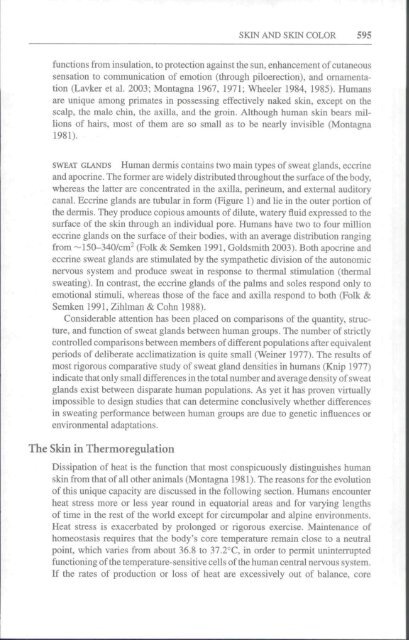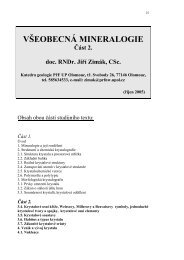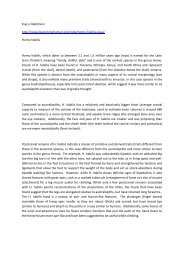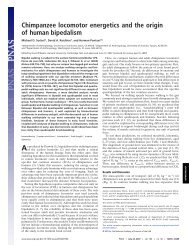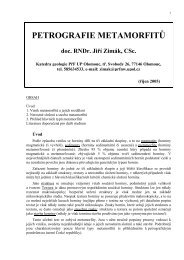THE EVOLUTION OF HUMAN SKIN AND SKIN COLOR Nina G ...
THE EVOLUTION OF HUMAN SKIN AND SKIN COLOR Nina G ...
THE EVOLUTION OF HUMAN SKIN AND SKIN COLOR Nina G ...
You also want an ePaper? Increase the reach of your titles
YUMPU automatically turns print PDFs into web optimized ePapers that Google loves.
•T>^<strong>SKIN</strong> <strong>AND</strong> <strong>SKIN</strong> <strong>COLOR</strong> 595functions from insulation, to protection against the sun, enhancement of cutaneoussensation to communication of emotion (through piloerection), and omamentation(Lavker et al. 2003; Montagna 1967, 1971; Wheeler 1984, 1985). Humansare unique among primates in possessing effectively naked skin, except on thescalp, the male chin, the axilla, and the groin. Although human skin bears millionsof hairs, most of them are so small as to be nearly invisible (Montagna1981).SWEAT GL<strong>AND</strong>S Human dermis contains two main types of sweat glands, eccrineand apocrine. Tbe former are widely distributed throughout the surface of the body,whereas the latter are concentrated in the axilla, perineum, and extemal auditorycanal. Eccrine glands are tubular in form (Figure 1) and lie in the outer portion ofthe dermis. They produce copious amounts of dilute, watery fluid expressed to thesurface of the skin through an individual pore. Humans have two to four millioneccrine glands on the surface of their bodies, with an average distribution rangingfrom ~150-340/cm2 (Folk & Semken 1991. Goldsmith 2003). Both apocrine andeccrine sweat glands are stimulated by the sympathetic division of the autonomicnervous system and produce sweat in response to thermal stimulation (thermalsweating). In contrast, the eccrine glands of the palms and soles respond only toemotional stimuli, whereas those of the face and axilla respond to both (Folk &Semken 1991, Zihlman & Cohn 1988).Considerable attention has been placed on comparisons of the quantity, structure,and function of sweat glands between human groups. The number of strictlycontrolled comparisons between members of different populations after equivalentperiods of deliberate acclimatization is quite small (Weiner 1977). The results ofmost rigorous comparative study of sweat gland densities in humans (Knip 1977)indicate that only small differences in the total number and average density of sweatglands exist between disparate human populations. As yet it has proven virtuallyimpossible to design studies that can determine conclusively whether differencesin sweating performance between human groups are due to genetic influences orenvironmental adaptations.The Skin in ThermoregulationDissipation of heat is the function that most conspicuously distinguishes humanskin from that of all other animals (Montagna 1981). The reasons for the evolutionof this unique capacity are discussed in the following section. Humans encounterheat stress more or less year round in equatorial areas and for varying lengthsof time in the rest of the world except for circumpolar and alpine environments.Heat stress is exacerbated by prolonged or rigorous exercise. Maintenance ofhomeostasis requires that the body's core temperature remain close to a neutralpoint, which varies from about 36.8 to 37.2^C, in order to permit unintermptedfunctioning of the temperature-sensitive cells of the human central nervous system.If the rates of production or loss of heat are excessively out of balance, core


